Musical instruments have always had one foot in the past and the other in the tech trends of the future. The digital world, arriving in force in the 2000s, had given us entirely new genres of electronica. But the world is always changing, so get ready for even more musical experimentation in the coming decade. Here are a few glimpses into the future of instruments and the newest musical arts:
 Making Movement into Music: Using apps to plot out notes is last year’s news. Now garage developers and tech companies have more ambitious projects – like turning body movement into music. No surprise, these programs typically use the Microsoft Kinect to produce sounds based on gesture and movement. Think of conducting, but as a way to play music instead of leading it. There is no “official” Kinect program for creating music with your hands, but some of the hacks are serious business, like the project created by Australian composer Chris Vik, which he played at the Melbourne Town Hall. Vik’s program uses an electric interface to play real notes on an ancient organ in accordance with movement picked up by the motion-sensing camera. If it works for an organ, what else could it work with? Expect body-music to pick up steam as people use increasingly elaborate sensors and MIDI devices translate movement into tunes…sometimes with lasers.
Even More Synthetic Materials: Two separate trends are driving synthetic materials in musical instruments. First, the destruction of key forests such as Brazilian rosewood are making the best-sounding woods incredibly expensive to manufacture. While sustainability practices are countering the problem, most manufacturers are devoting more energy to cheaper synthetic materials that have more attraction on the market. The second trend is the development of synthetics themselves – they are getting cheaper and stronger. Nanotechnology and customized manufacturing are creating new possibilities for replacing traditional varnishes or woods with future materials…if manufacturers can get the sound just right.
Combining Synth and Strings: The partnership between digital sound and old-fashioned harmonics is destined to grow ever closer as inventors and researches continue to experiment. While some inventions are a little weird, others are entrancingly practical. Check out the latest synthesizer violin, designed to pick up bow movements with embedded sensors and transform them into digital sounds spanning dozens of instruments (there’s also a video camera, for some reason). If synth violins are becoming this advanced, you can bet that violas will join before long.
Fingerplay: The 2010s are the years of the touchscreen, no doubt about it. We have already seen the rise of iPhone and iPad apps for creating your own music, from child-friendly games to more advanced MIDI interfaces. But don’t expect the trend to stop there. Before long we will see a surge in popular for all digital/traditional instruments you can play with a few taps of the fingers. Dedicated touchscreens and touchboards are already under development or out. New fusion instruments like the HAPI drum are marketing themselves based on a finger-friendly feel. The age of the touch is upon us, so start practicing those delicate tapping motions!
Public Involvement: Can musical instruments be public? Does that even make sense? Some cities are trying nonetheless, especially when it comes to new park projects. If you think you have seen everything, look at the hydraulophones and poseidophones some towns are experimenting with. These are part sculptures, part water features, and part musical instruments. Anyone walking by can play them by blocking the right rivulets of water on a hot summer day…although it takes an expert to turn out a water-sculpture melody. Some cities are getting rid of the human element altogether and creating sea organs that the tides can play. Will architects and landscapers start putting nature instruments everywhere? Apparently all you need is a little wind or water.
Justin Miller is a professional blogger that writes for Jamplay.com. JamPlay is a leading online music educator offering 2,000+ beginning guitar lessons in HD.
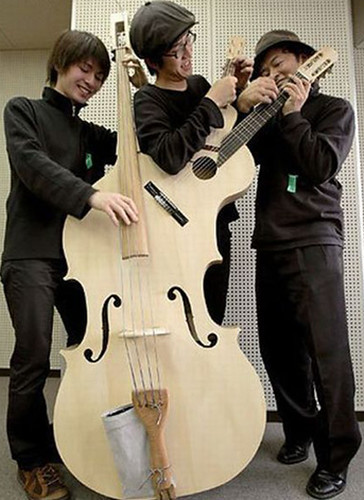

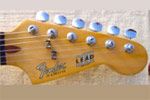
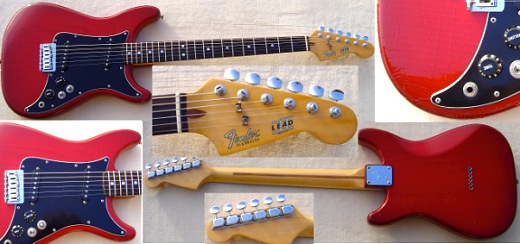


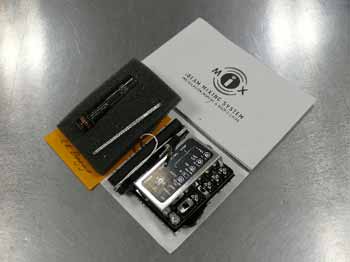


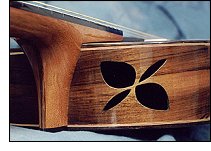 The one thing that I see in the evolution of the acoustic guitar today is its link with the past from Canada’s own, Glenn Gould.
The one thing that I see in the evolution of the acoustic guitar today is its link with the past from Canada’s own, Glenn Gould.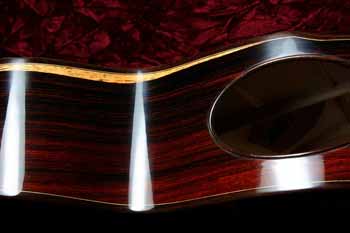
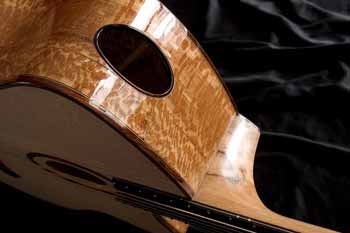
 The one thing that caught my eye maybe half way through the show was that he was a left handed bass player and here’s the kicker, he had it strung upside down. He places the thick strings that normally go at the top of the neck on the bottom part.
The one thing that caught my eye maybe half way through the show was that he was a left handed bass player and here’s the kicker, he had it strung upside down. He places the thick strings that normally go at the top of the neck on the bottom part.